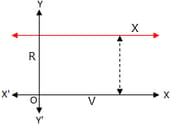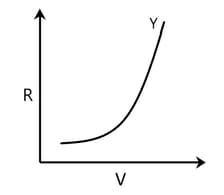David Sang and Graham Jones Solutions for Chapter: Resistance and Resistivity, Exercise 9: EXAM-STYLE QUESTIONS
David Sang Physics Solutions for Exercise - David Sang and Graham Jones Solutions for Chapter: Resistance and Resistivity, Exercise 9: EXAM-STYLE QUESTIONS
Attempt the practice questions on Chapter 10: Resistance and Resistivity, Exercise 9: EXAM-STYLE QUESTIONS with hints and solutions to strengthen your understanding. Physics for Cambridge International AS & A Level Coursebook 3rd Edition Digital Access solutions are prepared by Experienced Embibe Experts.
Questions from David Sang and Graham Jones Solutions for Chapter: Resistance and Resistivity, Exercise 9: EXAM-STYLE QUESTIONS with Hints & Solutions
An element of an electric fire is made up from a length of nichrome wire of diameter and length . The resistance of this element is Another element, also made from nichrome, for a different electric fire, has a length of and a diameter of This element has a resistance of What is the relationship between and ?
Sketch a graph of resistance against voltage for a wire of pure iron kept at constant temperature. Label this line .
Sketch a graph of resistance against voltage for wire of impure iron, which is kept at constant temperature. Label this line .
Graph of resistance against voltage for a wire of pure iron kept at a constant temperature:

Graph of resistance against voltage for a wire of impure iron kept at a constant temperature:

Explain how the graphs would change if the wires were kept at a higher, but still constant, temperature.
Deduce how the resistance of a wire made of pure iron would change if both the diameter and the length were doubled.
The readings in this table are recorded from an experiment to measure the resistivity of silver.

Calculate the resistivity of silver.
The readings in this table are recorded from an experiment to measure the resistivity of silver.
| Diameter of the wire | 0.40 ± 0.2 mm |
| Length of wire | 2.25 ± 0.5 m |
| Resistance of wire | 0.28 ± 0.01 Ω |
Calculate the percentage uncertainty in each of the variables.
The readings in this table are recorded from an experiment to measure the resistivity of silver.

Use your table to calculate the absolute uncertainty in the value of the resistivity obtained in the experiment.
